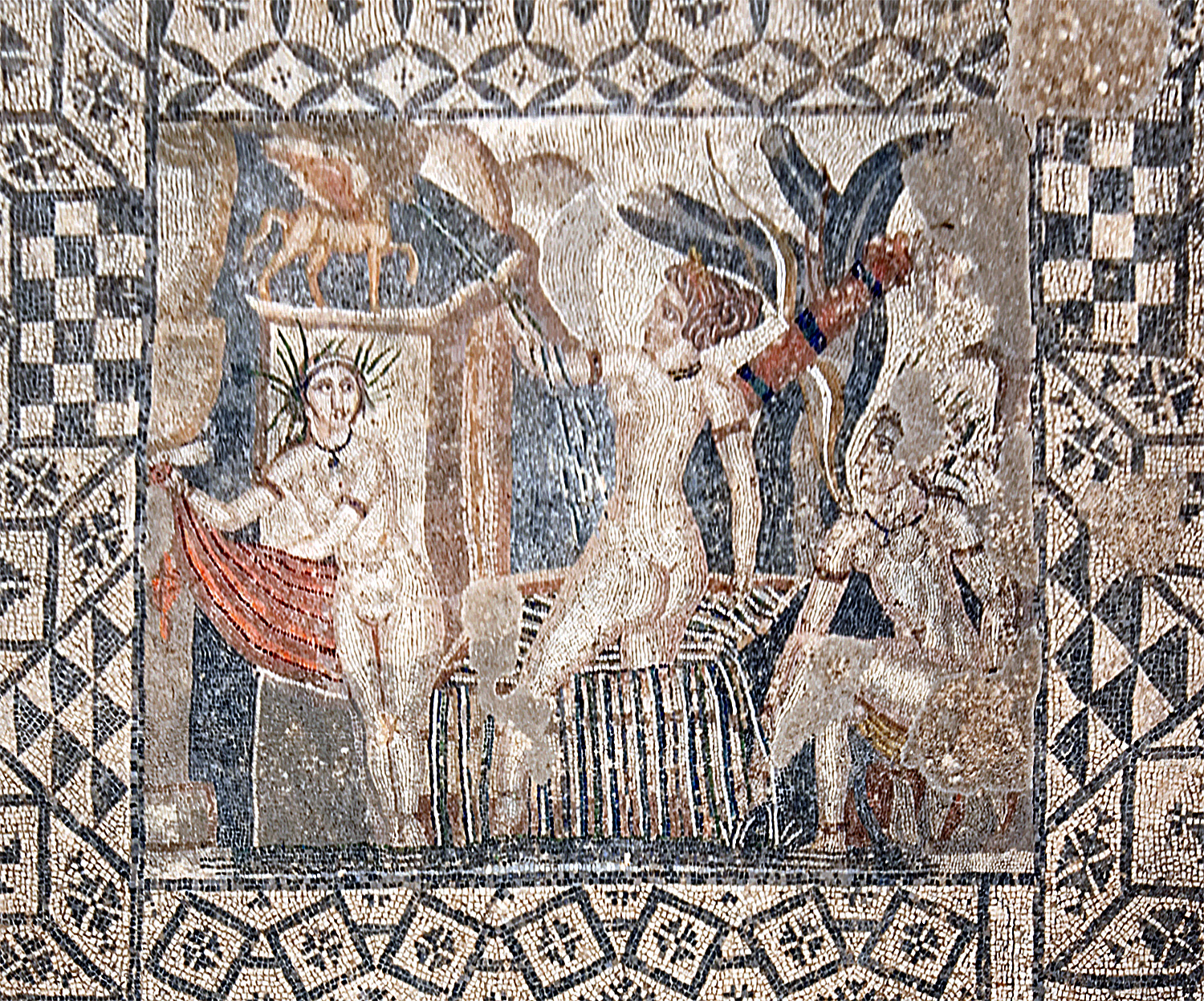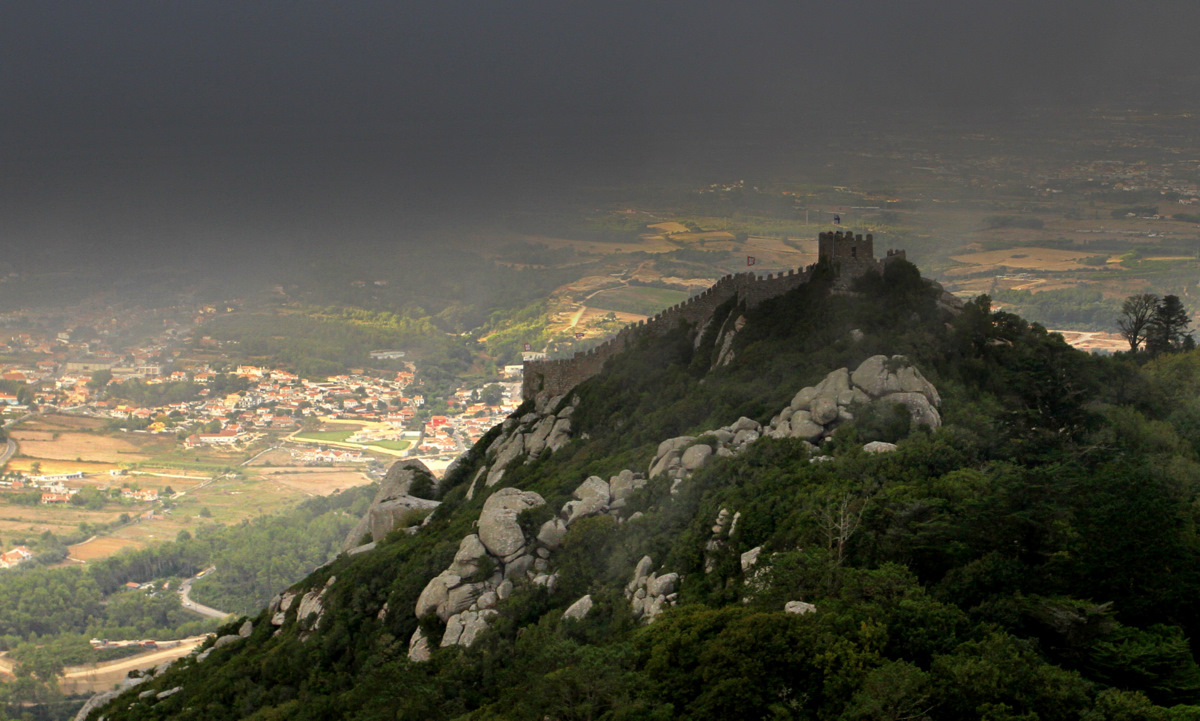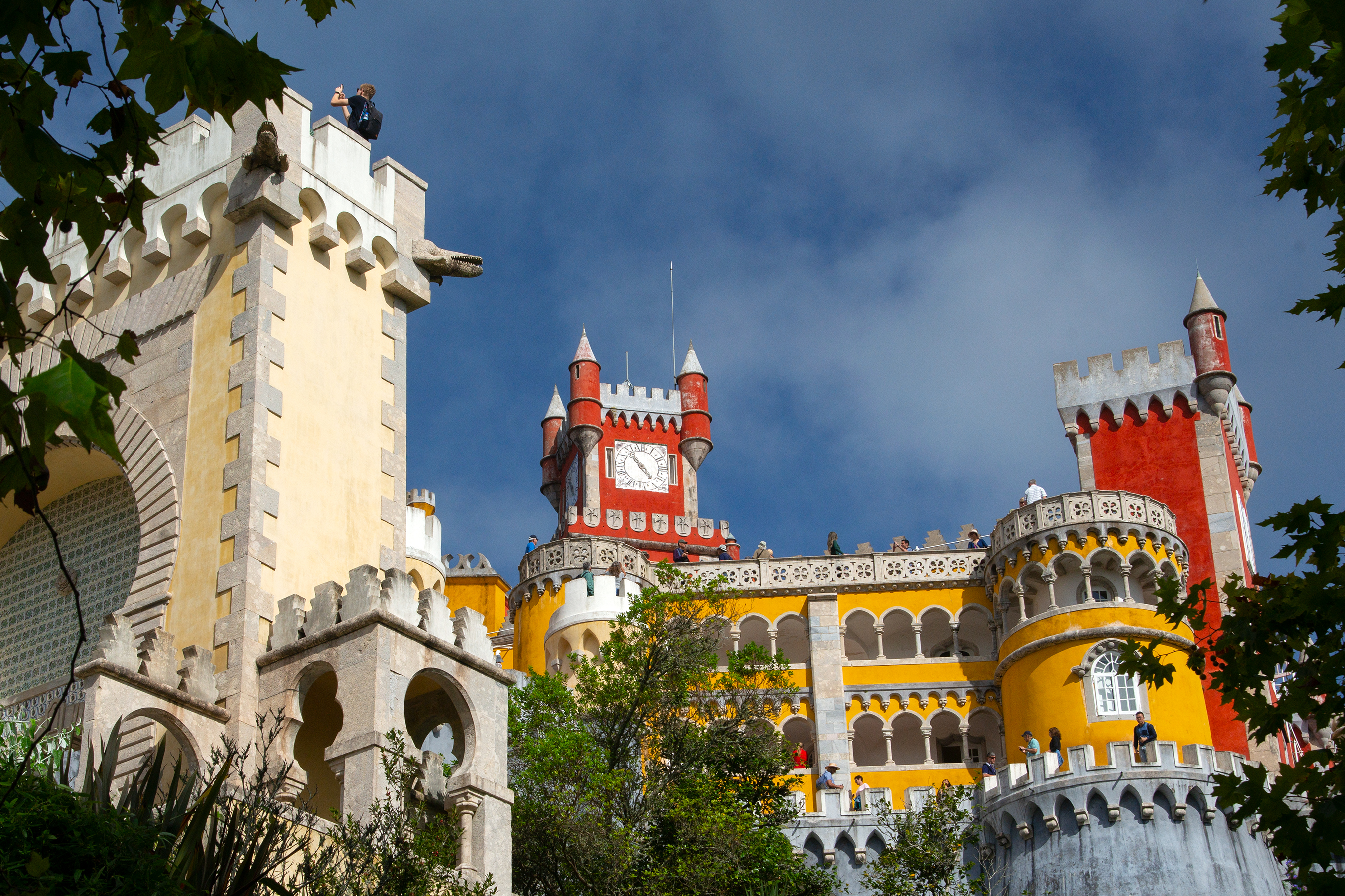|
Sintra Mountains
The Sintra Mountains (), is a mountain range in western Portugal. Its highest point is at 529 meters (1,736 ft) near Sintra. The range covers about 16 kilometers (10 mi) from the resort town of Sintra to ''(Cape Roca)'' on the Atlantic Ocean. It was known to the Ancient World as Lunae Mons (mountain of the Moon) and was the legendary retreat of Diana (mythology), Diana the Huntress (known as Cynthia to the Romans, from the Greek ''Κύνθια'', hence Çintra). It has a rich fauna, foxes, genet, moles, salamanders, peregrine falcons, vipers and various species of scaly reptiles. Its climate is temperate with many oceanic influences and hence presents a higher rainfall than the remaining area of Lisbon. It also has a unique vegetation. About nine hundred plant species are indigenous, ten percent of which are endemic. Namely oak, cork oak and pine wood. It is the target of several sightseeing tours. It is also visited by climbing and mountaineering practitioners, sinc ... [...More Info...] [...Related Items...] OR: [Wikipedia] [Google] [Baidu] [Amazon] |
Sintra Синтра - Panoramio (134)
Sintra (, ), officially the Town of Sintra (), is a town and municipality in the Greater Lisbon region of Portugal, located on the Portuguese Riviera. The population of the municipality in 2021 was 385,654, in an area of . Sintra is one of the most urbanized and densely populated municipalities of Portugal. A major tourist destination famed for its picturesqueness, the municipality has several historic palaces, castles, scenic beaches, parks and gardens. The area includes the Sintra-Cascais Nature Park through which the Sintra Mountains run. The historic center of the ''Vila de Sintra'' is famous for its 19th-century Romanticist architecture, historic estates and villas, gardens, and royal palaces and castles, which resulted in the classification of the town as a UNESCO World Heritage Site. Sintra's landmarks include the medieval Castle of the Moors, the romanticist Pena National Palace and the Portuguese Renaissance Sintra National Palace. Sintra is one of the wealthiest mun ... [...More Info...] [...Related Items...] OR: [Wikipedia] [Google] [Baidu] [Amazon] |
Portugal
Portugal, officially the Portuguese Republic, is a country on the Iberian Peninsula in Southwestern Europe. Featuring Cabo da Roca, the westernmost point in continental Europe, Portugal borders Spain to its north and east, with which it shares Portugal-Spain border, the longest uninterrupted border in the European Union; to the south and the west is the North Atlantic Ocean; and to the west and southwest lie the Macaronesia, Macaronesian archipelagos of the Azores and Madeira, which are the two Autonomous Regions of Portugal, autonomous regions of Portugal. Lisbon is the Capital city, capital and List of largest cities in Portugal, largest city, followed by Porto, which is the only other Metropolitan areas in Portugal, metropolitan area. The western Iberian Peninsula has been continuously inhabited since Prehistoric Iberia, prehistoric times, with the earliest signs of Human settlement, settlement dating to 5500 BC. Celts, Celtic and List of the Pre-Roman peoples of the Iberia ... [...More Info...] [...Related Items...] OR: [Wikipedia] [Google] [Baidu] [Amazon] |
Sintra
Sintra (, ), officially the Town of Sintra (), is a town and municipality in the Greater Lisbon region of Portugal, located on the Portuguese Riviera. The population of the municipality in 2021 was 385,654, in an area of . Sintra is one of the most urbanized and densely populated municipalities of Portugal. A major tourist destination famed for its picturesqueness, the municipality has several historic palaces, castles, scenic beaches, parks and gardens. The area includes the Sintra-Cascais Nature Park through which the Sintra Mountains run. The historic center of the ''Vila de Sintra'' is famous for its 19th-century Romanticist architecture, historic estates and villas, gardens, and royal palaces and castles, which resulted in the classification of the town as a UNESCO World Heritage Site. Sintra's landmarks include the medieval Castle of the Moors, the romanticist Pena National Palace and the Portuguese Renaissance Sintra National Palace. Sintra is one of the wealthi ... [...More Info...] [...Related Items...] OR: [Wikipedia] [Google] [Baidu] [Amazon] |
Cabo Da Roca
Cabo da Roca () or Cape Roca is a cape which forms the westernmost point of the Sintra Mountain Range, of mainland Portugal, of continental Europe, and of the Eurasian landmass. It is situated in the municipality of Sintra, near Azóia, in the south west of the Lisbon District. Notably, the point includes a lighthouse that started operation in 1772. History Cabo da Roca was known to the Romans as ''Promontorium Magnum'' and during the Age of Sail as the Rock of Lisbon. Lighthouse Geography The cape is within the Sintra-Cascais Natural Park, 42 kilometres west of the city of Lisbon and in the southwest of Sintra. A location () is inscribed on a stone plaque, located on a monument at the site. The western coast is a mixture of sandy beaches and rocky cliff promontories: around Cabo da Roca, cliffs are more than 100 metres in height, and cut into crystalline rocks, composed of strongly folded and faulted sedimentary units. These forms are disturbed by dikes and smal ... [...More Info...] [...Related Items...] OR: [Wikipedia] [Google] [Baidu] [Amazon] |
Atlantic Ocean
The Atlantic Ocean is the second largest of the world's five borders of the oceans, oceanic divisions, with an area of about . It covers approximately 17% of Earth#Surface, Earth's surface and about 24% of its water surface area. During the Age of Discovery, it was known for separating the New World of the Americas (North America and South America) from the Old World of Afro-Eurasia (Africa, Asia, and Europe). Through its separation of Afro-Eurasia from the Americas, the Atlantic Ocean has played a central role in the development of human society, globalization, and the histories of many nations. While the Norse colonization of North America, Norse were the first known humans to cross the Atlantic, it was the expedition of Christopher Columbus in 1492 that proved to be the most consequential. Columbus's expedition ushered in an Age of Discovery, age of exploration and colonization of the Americas by European powers, most notably Portuguese Empire, Portugal, Spanish Empire, Sp ... [...More Info...] [...Related Items...] OR: [Wikipedia] [Google] [Baidu] [Amazon] |
Diana (mythology)
Diana is a goddess in Religion in ancient Rome, Roman religion, primarily considered a patroness of the countryside and nature, hunters, wildlife, childbirth, crossroads, the night, and the Moon. She is Syncretism, equated with the Greek mythology, Greek goddess Artemis, and absorbed much of Artemis' mythology early in Roman history, including a birth on the island of Delos to parents Jupiter (mythology), Jupiter and Latona, and a twin brother, Apollo,''Larousse Desk Reference Encyclopedia'', The Book People, Haydock, 1995, p. 215. though she had Diana Nemorensis, an independent origin in Italy. Diana is considered a virgin goddess and protector of childbirth. Historically, Diana made up a triad with two other Roman deities: Egeria (mythology), Egeria the water nymph, her servant and assistant midwife; and Virbius, the woodland god. Diana is revered in modern Modern paganism, neopagan religions including Reconstructionist Roman religion, Roman neopaganism, Stregheria, and Wic ... [...More Info...] [...Related Items...] OR: [Wikipedia] [Google] [Baidu] [Amazon] |
Castle Of The Moors
The Castle of the Moors () is a hilltop medieval castle located in the central Portuguese civil parish of Santa Maria e São Miguel, in the municipality of Sintra, about northwest of Lisbon. Built by the Moors in the 8th and 9th centuries, it was an important strategic point during the Reconquista, and was taken by Christian forces after the fall of Lisbon in 1147. It is classified as a National Monument, part of the Sintra Cultural Landscape, a UNESCO World Heritage Site. History The castle was constructed during the 8th and 9th centuries, during the period of Muslim Iberia, as the central place in a territory that was primarily agricultural, and which was necessary to protect its population. In 1031, after the loss of Córdoba to the Almoravid dynasty, the king of Badajoz opted to transfer to Alfonso VI of León and Castile a few territories on the Iberian peninsula (among them Sintra) in order to gain an alliance with the Christian king. This transfer did not result in a ... [...More Info...] [...Related Items...] OR: [Wikipedia] [Google] [Baidu] [Amazon] |
Pena National Palace
The Pena Palace () is a Romanticist castle in São Pedro de Penaferrim, in the municipality of Sintra, on the Portuguese Riviera. The castle stands on the top of a hill in the Sintra Mountains above the town of Sintra, and on a clear day it can be easily seen from Lisbon and much of its metropolitan area. It is a national monument and constitutes one of the major expressions of 19th-century Romanticism in the world. The palace is a UNESCO World Heritage Site and one of the Seven Wonders of Portugal. It is also used for state occasions by the President of the Portuguese Republic and other government officials. History The castle's history started in the Middle Ages when a chapel dedicated to ''Our Lady of Pena'' was built on the top of the hill above Sintra. According to tradition, construction occurred after an apparition of the Virgin Mary. In 1493, John II, accompanied by his wife Leonor of Viseu, made a pilgrimage to the site to fulfill a vow. His successor, Man ... [...More Info...] [...Related Items...] OR: [Wikipedia] [Google] [Baidu] [Amazon] |
Sintra National Palace
The Palace of Sintra (), also called Town Palace (''Palácio da Vila''), is located in the town of Sintra, in the Lisbon District of Portugal. It is a present-day historic house museum. It is the best-preserved medieval royal residence in Portugal, being inhabited more or less continuously from at least the early 15th century to the late 19th century. It is a significant tourist attraction, and is part of the cultural landscape of Sintra, a designated UNESCO World Heritage Site. History Middle ages It was one of two castles at what is now Sintra in the Moorish Al-Andalus era that began with the Umayyad conquest of Hispania in the 8th century. The other, now known as the '' Castelo dos Mouros'' (Castle of the Moors), located atop a high hill overlooking modern Sintra, is now a romantic ruin. The castle now known as Sintra National Palace, located downhill from the ''Castelo dos Mouros'', was the residence of the Islamic Moorish Taifa of Lisbon rulers of the region. The earl ... [...More Info...] [...Related Items...] OR: [Wikipedia] [Google] [Baidu] [Amazon] |
Monserrate Palace
The Monserrate Palace () is a palatial villa located near Sintra, the traditional summer resort of the Portuguese court in the foothills overlooking the Atlantic Ocean north west of the capital, Lisbon. History According to legend, there was a chapel dedicated to Virgin Mary built by Afonso Henriques after the reconquest of Sintra (circa 1093). On its ruins another chapel dedicated to Our Lady of Monserrate was constructed on the top of the hill in 1540. The estate was then owned by Hospital Real de Todos os Santos, Lisbon. In the 17th century possession of the property was taken by the Mello e Castro family but after the 1755 Lisbon earthquake the farmhouse became unlivable. An English merchant named Gerard de Visme rented the farm in 1789 and built a neo-Gothic house over the ruins of the chapel. In 1793-1794 the estate was subleased by William Thomas Beckford who started to design a landscaped garden. Though the property was still in ruins when Lord Byron visited in ... [...More Info...] [...Related Items...] OR: [Wikipedia] [Google] [Baidu] [Amazon] |
Quinta Da Regaleira
''Quinta da Regaleira'' is a Quinta (estate), ''quinta'' (manor house) located near the historic centre of Sintra, Portugal. It is classified as a World Heritage Site by UNESCO within the "Cultural Landscape of Sintra". Along with the other palaces in the area such as the Quinta do Relógio, Pena Palace, Pena, Monserrate Palace, Monserrate and Seteais Palace, Seteais palaces, it is considered one of the principal tourist attractions of Sintra. The property consists of a Romanticism, Romantic palace and chapel, and a luxurious park that features lakes, grottoes, wells, benches, fountains, and a vast array of exquisite constructions. The palace is also known as "The Palace of Monteiro the Millionaire", which is based on the nickname of its best known former owner, António Augusto Carvalho Monteiro. The palace was designed by the Italian architect Luigi Manini. History The land that is now Quinta da Regaleira had many owners over the years. It belonged to the Viscounts, Viscount ... [...More Info...] [...Related Items...] OR: [Wikipedia] [Google] [Baidu] [Amazon] |






